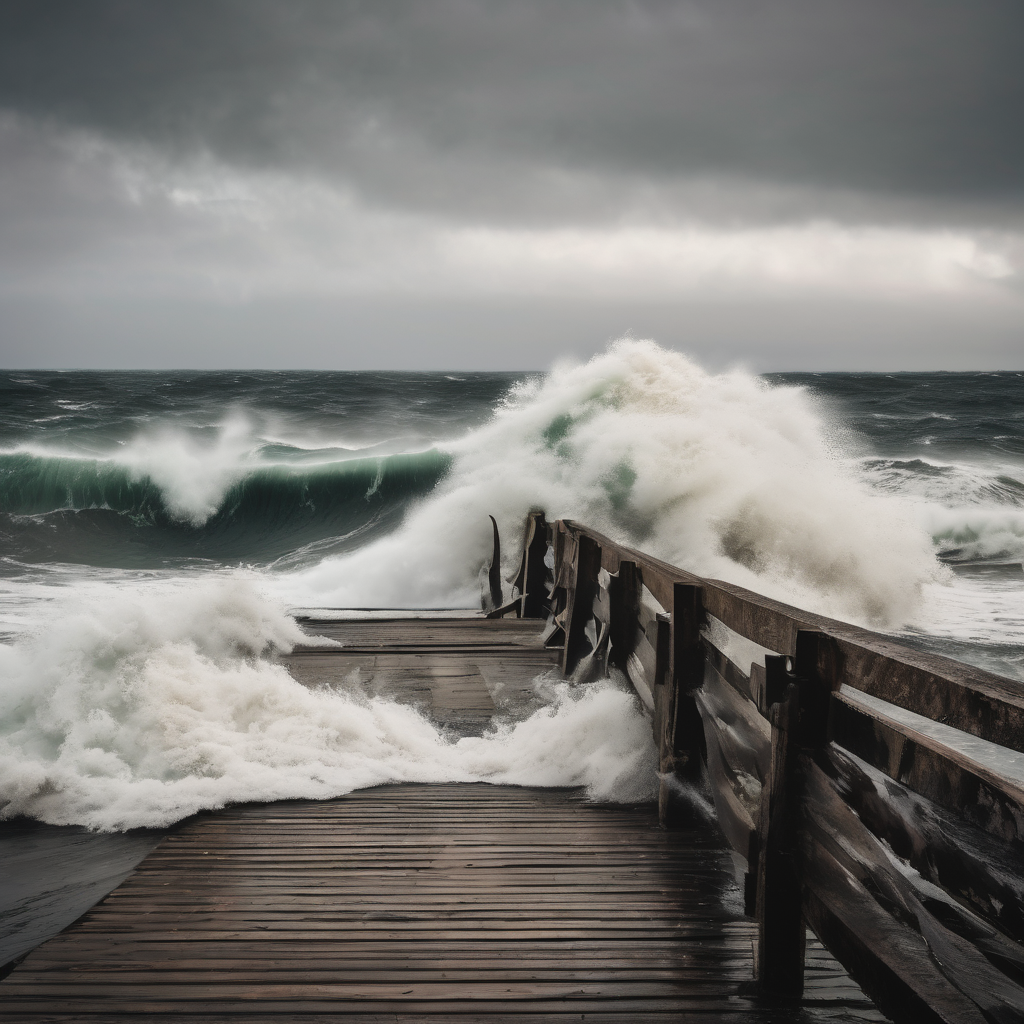Rescue teams are actively airlifting hundreds of evacuees from rural Alaska after remnants of a typhoon brought devastating hurricane-force winds and unprecedented storm surges to the state’s remote western coast over the weekend. The storm has led to severe flooding, sweeping houses out to sea and submerging entire coastal villages. Tragically, at least one person has died and two others are reported missing, with more than 1,000 individuals displaced as winter rapidly approaches and officials work to assess the extensive damage.
Geoff Bennett spoke with Sage Smiley, news director at KYUK in Bethel, Alaska, a town that has become central to the recovery operations. Smiley described the situation as highly dynamic, with helicopters and military planes transporting people and supplies between Bethel, the coast, and Anchorage. Efforts are underway to ensure the safety and housing of evacuees, especially in the villages most affected by the storm.
The damage across the region has been extensive. Smiley indicated that the storm’s trajectory was unexpected, as the remnants of Typhoon Halong turned sharply, impacting areas like the Kuskokwim Delta. Communities close to the coast experienced hurricane-force winds exceeding 100 miles per hour, resulting in catastrophic flooding that has left houses overturned and significantly impaired infrastructure.
Among the hardest-hit communities are Kipnuk and Kwigillingok, both Alaska Native towns. Accounts from evacuees illustrate the shock residents faced; many experienced the harrowing reality of their homes floating away, prompting them to seek refuge with family members who had also lost their residences. As they sheltered in schools with diminishing supplies, evacuees are confronting the aftermath of a storm they had never anticipated.
With about 1,500 people displaced, the logistics of rebuilding in this remote region are particularly challenging, as it lacks access to a conventional road system. This remoteness greatly complicates rescue operations, forcing the Coast Guard to evacuate individuals in small groups due to damaged runways. Bethel, although serving as a hub for aid, is struggling to accommodate the influx of evacuees, with local shelters nearing capacity.
Further complicating the recovery efforts, funding cuts have left communities like Kipnuk in a precarious position. The Trump administration’s cancellation of a $20 million EPA grant aimed at flood adaptation has raised concerns about how these communities will cope with future climate challenges. Reports indicate that nearly 150 Alaskan communities in the Yukon-Kuskokwim Delta urgently require funding to adapt to climate change impacts such as erosion, permafrost thawing, and land subsidence.
The local media landscape is also facing challenges, as KYUK, the smallest public TV station in the country, is grappling with significant budget shortfalls due to federal cuts in public media funding. Despite these obstacles, KYUK continues to strive for effective disaster coverage, delivering crucial information to residents in need.
As rescue and recovery efforts continue, there is hope that this disaster will illuminate the urgent need for, and importance of, climate adaptation resources for vulnerable communities. The courage shown by residents, volunteers, and local officials in the face of this disaster underscores the resilience of the Alaskan spirit and the determination to rebuild and adapt to an increasingly unpredictable climate.
